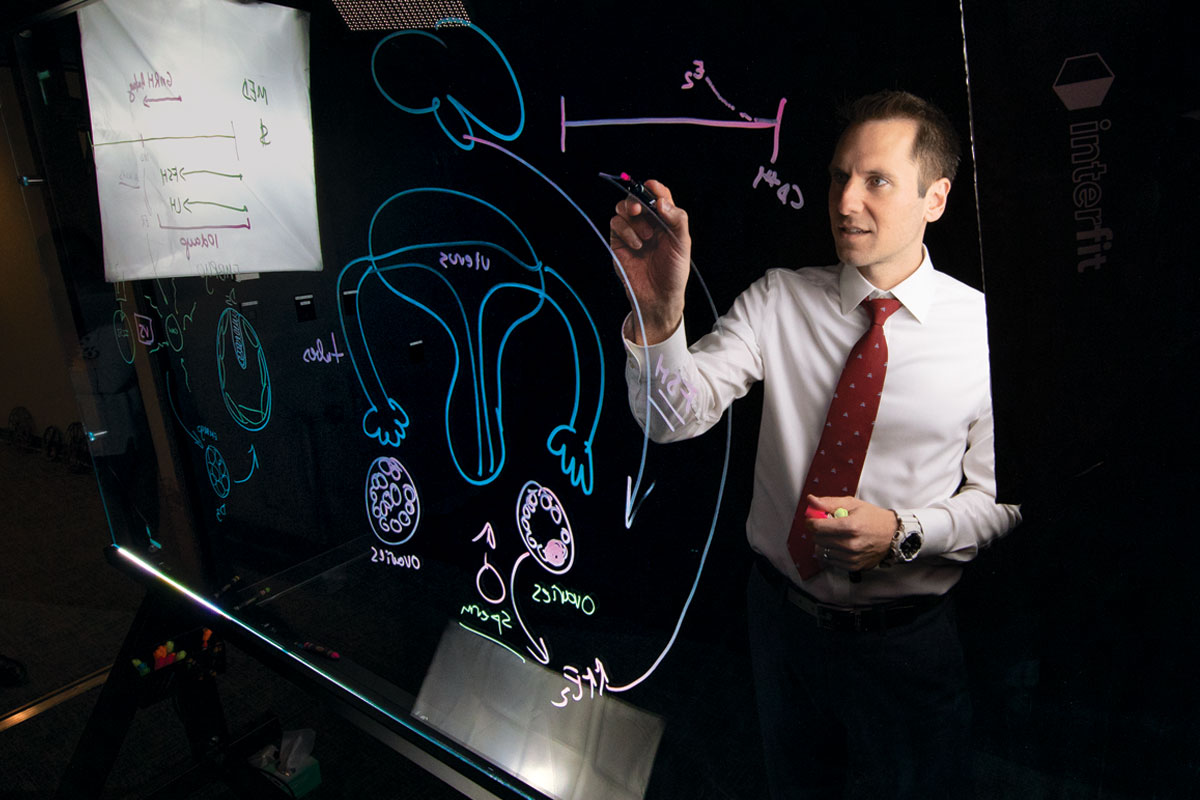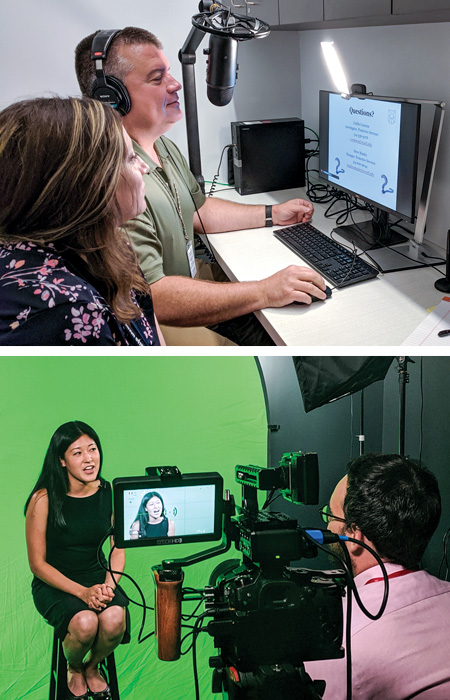
Near-empty lecture halls increasingly greet faculty at medical schools nationwide. And while much hand-wringing has occurred about the growing number of students and trainees who prefer digital learning, the School of Medicine is embracing it.
In September, it debuted the Instructional Design Studio. Located in the lower level of Bernard Becker Medical Library, the 700-square-foot space includes a formal sound-proof video-recording studio with greenscreen technology, as well as a smaller do-it-yourself studio. The studios support high-quality, faculty-directed video resources to enhance student engagement with course materials.
“Video-based education flows seamlessly into our curriculum renewal plans,” said Eva Aagaard, MD, the senior associate dean for education. “Not only has technology transformed our instructional capabilities, but it has been an integral part of most students’ lives from an early age.
“Instead of focusing on how to get the students to attend in-person lectures and courses, we want to meet the students where they are today,” she added.
A 2017 report by the Association of American Medical Colleges found that about one-quarter of the 1,347 second-year medical students surveyed acknowledged “almost never” attending lectures — a trend that increases each year.
“There are some topics where it makes sense for students to focus their time and energy on using video as their primary learning resource,” said Carolyn Dufault, PhD, assistant dean for educational technology and innovation in the Office of Medical Student Education.
“Instead of focusing on how to get the students to attend in-person lectures and courses, we want to meet the students where they are today.” – Eva Aagaard, MD
This also could enable faculty to use their expertise in more effective ways. “By flipping content that was previously a one-way push of information into a more efficient, shorter video-based format, the goal is to have faculty available to work directly with students in active learning sessions,” Dufault said. “Active learning is going to be key in our new curriculum.”
Educational leaders are systematically going through the curriculum looking for ways it can be enhanced through dynamic, clinically relevant videos, and encouraging faculty members to think about similar opportunities.

“We are just at the beginning of a critical transformation of how and why we deliver parts of our curriculum through video resources,” Dufault said. “While more medical schools realize that students choose to watch videos rather than attend lectures, few have a studio and dedicated resources to develop and produce educational videos.”
The team — including Matt Rice, a veteran videographer, and Erin Morris, an educational specialist and instructional designer — has worked with faculty on videos already in use.
One is a second-year course called Clinical Topics in Otolaryngology, taught by Joseph P. Bradley, MD, an assistant professor of otolaryngology. With the studio’s guidance and resources, Bradley helped transform an auditorium lecture presented with a standard slide deck into a video that includes examples of a real-life patient with his occupational therapist discussing age-related voice changes.
The video also shows an audiologist administering a standard hearing test and evaluating hearing aids, which students would have learned abstractly as it is impractical for 125 students to observe the procedure in an audiology testing booth.
“Students can see what really happens during a hearing test instead of listening in a detached manner,” Bradley said.
Another is a second-year course on infertility taught by Kenan R. Omurtag, an associate professor of obstetrics and gynecology. “The videos supplement assigned readings and allow me to deliver content that is more attuned with the ways content is consumed these days,” he said.
The studio team will build a video repository that broadly appeals to many learners, incorporating clinical skills demonstrations, standard protocols and refresher material.
“In the not-so-distant future, I envision video resources being available for just-in-time learning or re-learning,” Dufault said. “For example, if first-year students see a video related to performing an abdominal exam, the hope is that they will watch it again, as needed, in later years when they are on clinical rotations and that information is newly relevant.”
The library will grow and change in real time with the curriculum. Tracking analytics will allow ongoing improvement.
“Our analytics capabilities are going to be a game changer,” Dufault said. “Are students watching the full video? Skipping sections? If so, we can look to see what was happening there. Likewise, if we see large numbers of students re-watching a given segment of video, we may have evidence of an area that needs clarification or unpacking.
“The goal is to expand the depth, meaning and dimension of the already outstanding educational experience we provide students.”
Kristina Sauerwein is a senior medical sciences writer in Medical Public Affairs.
Published in the Winter 2019-20 issue


